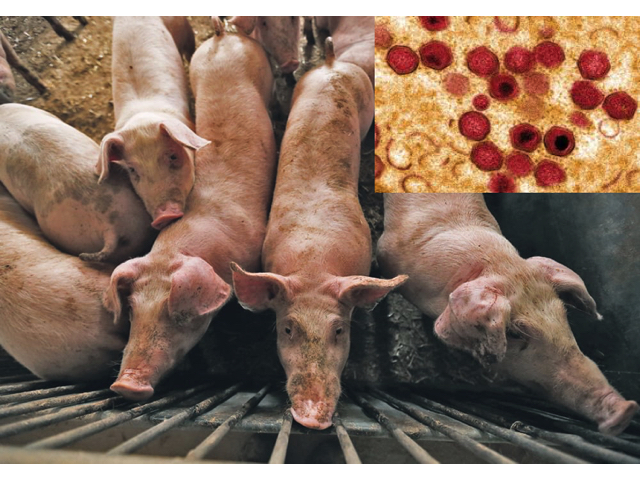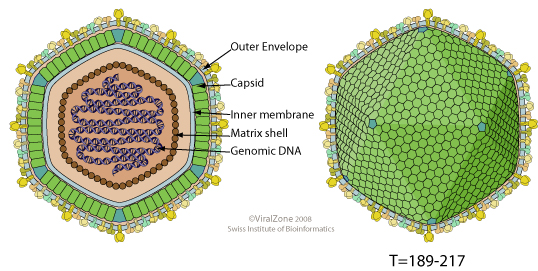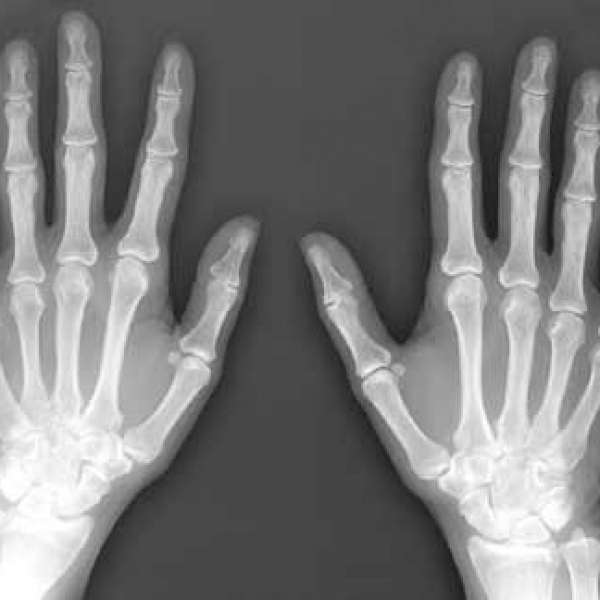Contact Admission
Center for Research and Application of Genes in Biomedical Sciences (CRAGB) OF PHANZHOU UNIVERSITY DEVELOPMENT KIT REAL-TIME PCR DEVELOPMENT OF CHAUZHOU DESCRIPTION
 Pigs provide an important source of high-quality protein and production is expected to increase in the future to meet the increasing global meat demand. However, the supply of pork is under threat by infectious diseases and among which the current African swine fever (ASF) is of great concern. This is a notable disease for the World Organization for Animal Health (OIE).
Pigs provide an important source of high-quality protein and production is expected to increase in the future to meet the increasing global meat demand. However, the supply of pork is under threat by infectious diseases and among which the current African swine fever (ASF) is of great concern. This is a notable disease for the World Organization for Animal Health (OIE).
Africa: In the early 1900s, African swine fever appeared from the wildlife of East Africa. ASF was first described in Kenya as an acute dengue fever in domestic pigs with a mortality rate of up to 100%, then spread across swine populations in most sub-Saharan countries, to Western Europe. Africa in the 1950s. To this day, the disease is still circulating or sporadic in most sub-Saharan Africa causing great socioeconomic and commercial impacts.
Europe: ASF first appeared in Europe in Portugal in 1957. The source was infected pork from Angola. The disease continued to circulate in Spain and Portugal until the mid-1990s, spreading from there to other European countries (France, Malta, Belgium, the Netherlands), the Caribbean and South America (Cuba, Dominican Republic, Haiti, Brazil). In 2007, the disease was first reported in Georgia, most likely because infected pork was carried on board ships from East Africa, then continued to spread throughout the Caucasus and into southern Russia. 2007. In January 2014, the first cases of ASF in wild boars were reported from the European Union, in Lithuania on the border with Belarus, Estonia, Latvia, Lithuania and Poland. In 2018, ASF was recorded in the Czech Republic, Hungary, Romania and Bulgaria; outside the EU, in the whole of Europe and Ukraine and Moldova. Belgium also reported cases of wild boar with ASF in 2018, with about 245 animals tested positive in a restricted area on the border with France and Luxembourg. The exact source of contamination is not known, but the most likely transport of contaminated products is the primary source.
Asia: The first ASF outbreak in China (Shenyang city, Liaoning region) was reported to OIE on August 3, 2018. However, this may not be the initial case, because a similar disease was found in the suburban district of Shenyang City nearly two months earlier. Although the measures were properly taken, the disease spread very quickly with four outbreaks on August 20, September 20, October 27, and November 22. More than 100 domestic pig outbreaks were reported from 23 provinces as of December 31. Control strategies include zoning, segregation, removal of all pigs in the affected area, safe handling of dead animals, contaminated product and materials, restriction on pig movement, and surveillance. strict epidemics. Classic hygiene practices are also used, including restriction of uneaten food (kitchen waste), early detection of viruses with clinical signs and diagnostic testing, and thorough cleaning and disinfection. Comprehensive epidemiological investigations and rigorous biosecurity measures on pig farms. Finally, appropriate import policies are in place to ensure that both raw pigs and uninfected pork products are included, including the handling of food waste from aircraft, ships or vehicles. They come from affected countries and control illegal imports of pigs and pork products. However, new outbreaks are continuing due to complex factors, including difficulty in controlling long borders, frequent exchanges of personnel and products with epidemic countries, and smuggling of meat products. pigs, a large number of backyards and small pig farms with poor biosecurity, difficult to control pig transport, difficult to detect ASF early, by confusing early clinical signs with other diseases ... Relatively low levels from infected animals can also lead to delays in suspicion of outbreaks.
African swine fever virus (ASFV)
ASF is caused by a large double-stranded DNA virus that replicates in the cytoplasm of a cell (the main target cell is the macrophage) and is the sole member of the family Asfarviridae. The viral genome is about 170 - 193 kbp and encodes 150 to 167 proteins, including those essential for viral replication.

ASFV can be spread easily between infected pigs by direct oral-nose contact or through abrasions. ASFV can also be transmitted indirectly from wild boars to domestic pigs (and vice versa) through soft ticks of the Ornithodoros species, which are carriers of the virus. The initial clinical signs of acute ASF in pigs include: fever above 41 ° C, loss of appetite and lethargy. As the disease progresses, animals may stop eating, bloody diarrhea, vomiting and miscarriage. Typical pathological changes associated with vasculitis include skin hemorrhage (bruising), pulmonary edema, splenomegaly, hemorrhagic lymphadenitis and urinary, pulmonary and bladder hemorrhage. Infections are associated with lymphopenia and thrombocytopenia, destruction of vascular endothelial cells, and initiation of diffuse intravascular coagulation. The mortality rate of infected pigs is very high, possibly up to 100% because there are currently no effective therapies and vaccines to protect pigs from the disease and the highly virulent ASFV strain. ASF is not a danger to humans but is fatal to domestic and wild boars. Viruses can persist for weeks or months in meat products (even in very cold temperatures) and feeding pigs can lead to infection. Pork can still be safely consumed when cooked.
African swine fever is happening in more than 9 provinces in Vietnam: Hung Yen, Thai Binh, Hai Phong, Thanh Hoa, Hanoi, Hai Duong, Ha Nam, Dien Bien and Hoa Binh and has become a hot news in past days. The disease is unpredictable and is at risk of spreading to the central and southern provinces.
There are many methods for ASFV testing such as traditional PCR, Real-time PCR, ELISA and genetic sequencing. Currently, the laboratory of CRAGB research center, Phan Chau Trinh University, has successfully researched and applied the ASFV detection kit by real-time PCR method using taqman probe recommended by OIE. This kit is capable of detecting virus in the samples of pork, EDTA anticoagulant blood, spleen, lymph nodes, and pharyngeal amygdala. Results will be available within 3 hours of receiving the sample. We are willing to participate in the early detection of local African swine fever. Local veterinary authorities and other units in the area can send samples to our labs for testing and accurately determine whether the African Swine Fever has occurred locally or not.
CRAGB Research Center Phan Chau Trinh University. Address: 09 Nguyen Gia Thieu, Dien Ngoc, Dien Ban, Quang Nam. Tel: 0235 3757959; Email: [email protected]
References:
- LK. Dixon, H. Sun, H. Roberts (2019), African swine fever, Antiviral Research, doi: 10.1016/j.antiviral.2019.02.018 [Epub ahead of print]
- OIE Terrestrial Manual 2012. Chapter 2.8.1 – African Swine Fever. Pp. 1067-1081
Other news
- Commencement of Construction of Two Special Projects ( 10:35 - 30/12/2023 )
- EXPANDING A NEW COLLABORATION OPPORTUNITY WITH GLOBAL ENGAGEMENT INSTITUTE (GEI) ( 08:32 - 22/12/2023 )
- Red-shanked Douc Langur Has Become the Symbolic Mascot of Phan Chau Trinh University ( 08:45 - 14/12/2023 )
- FORGING INTERNATIONAL COLLABORATION WITH VOLUNTEERING JOURNEYS ORGANIZATION ( 08:52 - 06/12/2023 )
- TIẾP ĐÓN, TRAO ĐỔI HỢP TÁC VỚI TỔ CHỨC VOLUNTEERING JOURNEYS ( 08:44 - 06/12/2023 )
- RESEARCH IDEAS COMPETITION FINALS FOR STUDENTS ( 13:37 - 02/12/2023 )
- Khóa học “Bồi dưỡng nghiệp vụ sư phạm cho giảng viên Đại học, Cao đẳng” ( 13:19 - 28/11/2023 )
- Phan Chau Trinh University is listed in the World Directory of Medical Schools by WHO. ( 08:04 - 23/11/2023 )
- Phan Chau Trinh University Participated in the 13th World Congress of the World Society for Pediatric Infectious Diseases (WSPID 2023) – South Africa ( 14:30 - 21/11/2023 )
- Celebrate the 41st Anniversary of Vietnamese Teachers' Day 20/11/2023 ( 13:33 - 16/11/2023 )








